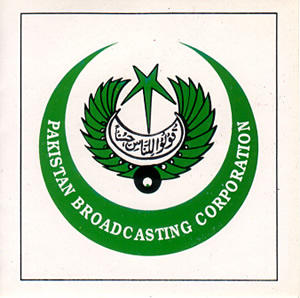
Text of editorial analysis by Neal Williams of BBC Monitoring
Media Services on 6 July
With General Pervez Musharraf's takeover as president in 1999 there
was a liberalization in broadcasting policies, aiming to encourage
growth in the private media sector.
However, as stated in an Internews report in 2004, media companies
were initially slow to take advantage of this new found freedom,
mostly due to initial deregulation issues. But since early 2004 over
20 television channels and around 50 FM radio stations have emerged,
thus bringing an end to more than five decades of the state's virtual
monopoly of broadcasting.
According to the latest figures from UNESCO, around 35 per cent of
Pakistan's population is illiterate, a figure which reveals that
around 65 per cent of the population rely on radio and television as
the major source for news.
Regulation
The Pakistan Electronic Media Regulatory Authority (PEMRA) was created
by Musharraf's government in March 2002 to regulate and issue radio
and television broadcast licences to the private sector.
A mandate was given to PEMRA to improve the standard of information,
education and entertainment, and to enlarge the choice of news,
current affairs and religion on the media.
PEMRA has certainly encouraged growth in the private sector electronic
media market although important restrictions still apply. Private FM
stations are not permitted to broadcast news and only the state-run
television channels broadcast terrestrially.
Although private satellite TV broadcasters may air news, many
Pakistanis do not have access to satellite television, and so the
government still has a major influence regarding the dissemination and
content of news through the state-owned Radio Pakistan, FM 101 network
and Pakistan Television. PEMRA has regularly issued statements saying
licences would be issued to private terrestrial television
broadcasters, although none were on air in March 2005.
FM radio
Now in its third phase, PEMRA has issued almost 100 FM broadcast
licences, although about half of all recipients are not on-air as they
have yet to be allocated a frequency. This is a concern highlighted by
PEMRA in their latest annual report, which warns that if frequencies
are not allocated at a faster pace, the broadcast sector growth will
be stunted. It urges a greater share of frequency spectrum bandwidth,
currently controlled by security agencies.
By March 2005 there were around 50 FM stations broadcasting in the
country. The majority of the stations' output consists of music and
phone-in chat shows aimed at the urban youth market. A handful of
stations invite discussion on politics and religion, such as Mast 103
FM and FM 96 from Karachi.
Assalam-o-Alaikum FM 100 was Pakistan's first private FM radio station
and started broadcasting in 1995 after receiving a licence from the
government. The state-owned Pakistan Broadcasting Corporation acted to
counteract the rise in popularity of modern, urban-based youth
programming by establishing its own FM network, FM 101. Launched in
1998, and broadcasting in seven major cities, the FM 101 network has a
distinct advantage over its private sector rivals because it is the
only FM station permitted to broadcast news.
Satellite television
Indus TV, Pakistan's first private satellite television channel, was
launched in early 2000 and signalled the start of competition for the
state-run PTV channels. By March 2005 there were over 20 private
satellite television channels broadcasting to, and from, Pakistan.
Two other major channels were soon to follow, the Dubai-based ARY TV
and Geo TV. Programming was initially family entertainment with
limited news bulletins. However, Indus and ARY now operate dedicated
24-hour news channels, Indus News and ARY One World, whilst Geo TV
includes at least 10 daily news bulletins.
The latest survey conducted by Internews in 2003 revealed that almost
30 per cent of Pakistanis had access to cable television, a market
which is rapidly expanding. Other private media companies were quick
to react and over the last two years a significant number of channels
have emerged. The target audience for these fledgling channels is
diverse - The City Channel has programmes for the citizens of Karachi,
Kawish TV and Sindh TV broadcast specifically to Sindh Province and
Mashriq TV targets the youth of Pakistan.
Restrictions
It is apparent that despite the movement to liberalize the broadcast
media in Pakistan, the state still wants to retain control. PEMRA have
recently taken sanctions against Mast 103 FM for rebroadcasting BBC
World Service Urdu news bulletins, and in another case reported by
Internews, a private radio station in Mithi recently had its licence
withdrawn for airing Hindu prayers, despite the station serving a
Hindu-majority population.
In May 2005 a bill was moved in the National Assembly to end cross
media restrictions and to further regulate the electronic media.
Broadcasters would face severe financial penalties and, or
imprisonment if they were to air programmes "if it is of the opinion
that such a particular programme or advertisement is against the
ideology of Pakistan".
Despite journalists having to work within these legal boundaries, the
electronic media market in Pakistan is now pluralistic and appears
likely to continue to expand. Source: BBC Monitoring research 6 Jul 05
(via DXLD)